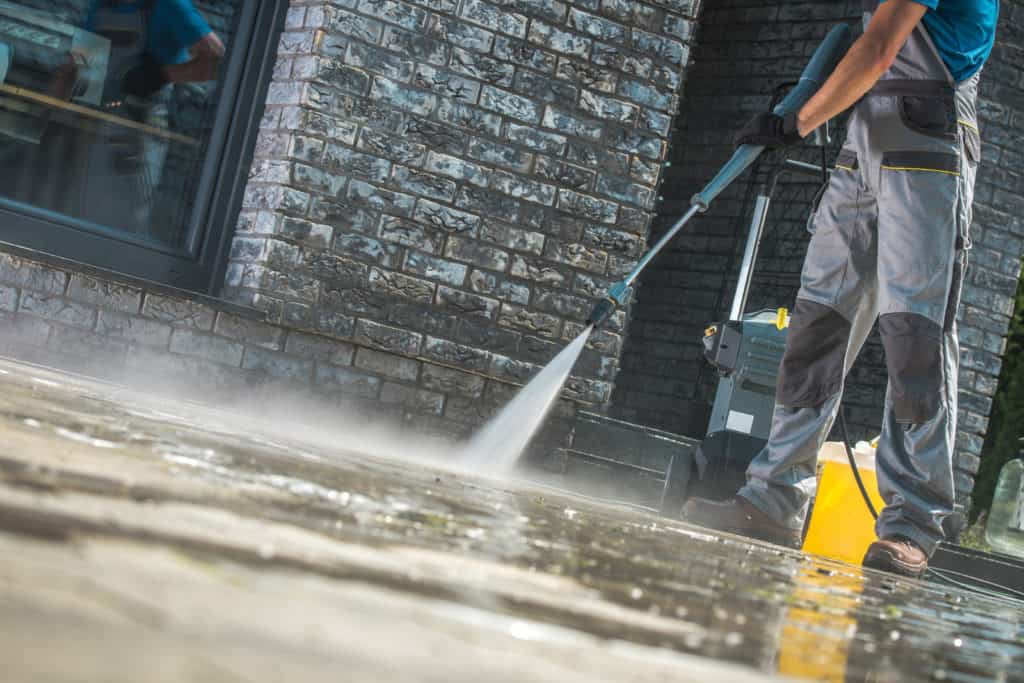Caring for The Home's Outdoors: A Pressure Washing Answer

Maintaining the facade of your property is essential not only for aesthetic appeal but also for protecting its equity and preventing deterioration over time. One of the most effective methods to keep your place looking its best is pressure washing. This robust cleaning technique uses forceful water to wash away soil, filth, and other debris from multiple surfaces, enhancing the overall look of your property.
For house owners seeking a neat and welcoming exterior, grasping what pressure washing is and how it can benefit your property is crucial. From improving curb appeal to extending the life of your surfaces, pressure washing offers a multitude of benefits. In this article, we will discuss the ins and outs of pressure washing, covering everything from the difference between pressure and soft washing to the safest methods for safely washing your residence without causing damage. Whether Homepage are contemplating a DIY approach or employing experts, our insights will help you make educated decisions for your home's outside maintenance.
Understanding Pressure Cleaning
Pressure washing is a cleaning technique that employs high-pressure water to remove dirt, gunk, fungus, lichen, and other debris from different types of surfaces. This approach is highly effective for reviving the look of exteriors such as cladding, driveways, patios, and platforms. By employing a custom-built machine, property owners can achieve a thorough cleaning that is often inaccessible with conventional cleaning methods. This method not only enhances the visual appeal of your property but also helps in the upkeep and life span of its surfaces.
For those unfamiliar with this cleaning method, it is essential to comprehend the basic workings behind pressure washing. The gear consists of a power source that powers a pressurizer, which in turn pressurizes water from a standard hose. The water under pressure is then discharged through a nozzle, creating a narrow spray capable of cutting through tough spots and contaminants. This system can be modified to suit specific surfaces, allowing for a personalized cleaning strategy that can manage multiple kinds of contaminants.
When considering this technique, it's necessary to distinguish it from soft washing, another technique that employs a lower pressure along with biodegradable cleaning solutions. While this method is ideal for hard surfaces that can withstand high pressure, soft washing is advised for fragile materials like roofs or painted surfaces. Comprehending these variations will help property owners opt for the most efficient cleaning strategy for their specific needs.

Advantages and Factors
Power washing offers a variety of benefits for property owners looking to maintain the appearance and integrity of their property. One of the primary advantages is the capability to effectively remove grime, mildew, mould, and other unsavory stains from exteriors, considerably enhancing the look from the street. A well-maintained exterior not only appears welcoming but can also boost property value. Additionally, routine pressure washing can prevent ongoing damage caused by build-up, giving surfaces a greater lifespan and reducing costs on future repairs.
While the benefits are clear, there are important considerations when deciding how to approach pressure washing. Homeowners must assess the state of the areas being washed and select the suitable method—high-pressure washing or low-pressure washing. Soft washing, for example, is often better suited for fragile surfaces like shingles or painted wood, where excessive pressure could lead to damage. It is crucial to know the distinctions between methods to avoid costly errors and achieve the intended results.
An additional factor to think about is whether to address pressure washing as a DIY project or hire professionals. While DIY pressure washing can help on costs, it requires understanding of tools, methods, and precautionary measures to ensure efficient and damage-free cleaning. On the other hand, hiring professionals guarantees expertise and the right tools for the task. Evaluating these options carefully will help homeowners make an educated choice that meets their requirements, financial plan, and dedication to ongoing maintenance.
Techniques and Best Practices
As you pressure washing, the method applied can significantly influence the outcome. Begin by selecting the appropriate nozzle size for your task; a wider spray pattern is good for sensitive surfaces, while a narrower pattern targets tough stains. Maintain a consistent distance from the surface—generally six to twelve inches—for even cleaning. Move the pressure washer in a smooth, sweeping motion rather than remaining in one spot to prevent damaging the material.
Before you begin, it's essential to prepare the area properly. Remove any furniture, plants, or items that might be harmed by moisture or debris. For surface cleaning, soak ahead of time the area with a cleaning solution appropriate for the material you are washing. Always test the pressure on a small, inconspicuous area to verify you do not harm the surface, particularly on wood, vinyl, or fragile materials.
Protection should always be a main concern when pressure washing. Wear suitable protective gear, including goggles and gloves, to shield yourself from debris and chemical runoff. If you're working on roofs or high places, use harnesses and stable ladders. Ensure children and pets away from the area, as the high-pressure water and cleaning solutions can be harmful. Following http://nutris.net/members/crookwalk3/activity/2418310/ will ensure a thorough clean while maintaining the integrity of your home’s exterior.
